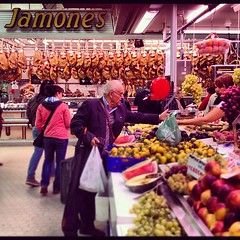 2012年3月24日,義大利頒佈全國性塑膠袋禁用法案。今年,義大利環保部長柯里尼(Corrado Clini)和經濟發展部長Corrado Passera簽署跨部會政令,依塑膠袋之成份特性詳細訂定禁用辦法,並刊載在3月的政府公報中。
2012年3月24日,義大利頒佈全國性塑膠袋禁用法案。今年,義大利環保部長柯里尼(Corrado Clini)和經濟發展部長Corrado Passera簽署跨部會政令,依塑膠袋之成份特性詳細訂定禁用辦法,並刊載在3月的政府公報中。
根據此塑膠袋禁用辦法,除另有規定,商家不得繼續使用傳統的一次性塑膠袋,必須改用可生物分解、可堆肥的生質塑膠袋。未遵守者,今年5月27日起將會處2500至25000歐元的罰款。情節嚴重者,罰款金額還可能更高。
除生物分解和可堆肥塑膠購物袋外,僅部分非生質塑膠袋可繼續使用,例外包括厚度超過200微米者、再生塑膠含量超過30%的食品用塑膠袋,以及厚度100微米以上且再生塑膠含量超過10%的非食品用塑膠袋。可重複使用紙、自然纖維布料、聚醯胺纖維和其他非聚化物製購物袋,依據該法規,亦可繼續使用。
 柯里尼表示,「此次明訂塑膠袋的禁用辦法,能有效增加環保材料的使用,將有助達成CIPE剛通過的減碳目標。」CIPE是義大利政府跨部會經濟發展委員會,是由內閣閣揆領導的11人小組。
柯里尼表示,「此次明訂塑膠袋的禁用辦法,能有效增加環保材料的使用,將有助達成CIPE剛通過的減碳目標。」CIPE是義大利政府跨部會經濟發展委員會,是由內閣閣揆領導的11人小組。
柯里尼指出,此政令將「消除塑膠生產過程的種種不確定性,促進綠色化學工業發展,讓義大利能跟上歐盟的腳步。」「我們的目標是將食品用塑膠袋全面替換成可生物分解和可堆肥塑膠袋,以減少垃圾量。 」
今年3月,歐盟委員會召開公眾諮詢會議,針對如何減少塑膠廢棄物汙染廣徵各方意見。此動作也促使義大利加快訂定禁用管理辦法的腳步。
歐盟環境執委波托奇尼克(Janez Potocnik)3月7日發表綠皮書,探討如何讓塑膠製品更能被物盡其用以減少塑膠廢棄物對環境的傷害,盼開啓全歐盟的討論與對話。
波托奇尼克指出,「塑膠廢棄物管理是環境保護所要面臨的挑戰,也是讓資源能被更有效利用的機會。高回收再利用率可以解決當代物質缺乏的問題,我相信塑膠仍大有可為。」
包含26個議題的公眾諮詢會議將持續到今年6月。會議結果將會是2014年相關政策檢討的重要參考,屆時現行垃圾回收和垃圾掩埋目標以及廢棄物管理五大方針都會是檢討的重點。
「歡迎所有權益關係人來參與,一同反思如何把塑膠廢棄物從危機變成轉機。」波托奇尼克表示。
環境中的塑膠廢棄物可以百年不壞,尤以海洋深受其害。每年有高達1千萬噸的垃圾被丟進海洋—其中塑膠佔絕大多數-把海洋變成全世界最大的垃圾場。
塑膠價格便宜,一般人往往用過即丟,回收率極低,歐洲地區有一半的塑膠垃圾被丟到垃圾掩埋場。波托奇尼克認為應避免將塑膠以掩埋方式處理,因為塑膠廢棄物常含有有毒物質,可能造成空氣污染和有害殘餘物。
A year after passing a nationwide plastic bag ban, the Italian government has identified the technical characteristics of plastic bags that can legally be used in a decree published in the Official Journal in March.
Environment Minister Corrado Clini and Economic Development Minister Corrado Passera signed the interministerial decree, which clarifies the requirements of the nationwide plastic bag ban that was enacted into law on March 24, 2012.
Merchants must discontinue the use of traditional single-use plastic bags in favor of bioplastic bags that are biodegradable and compostable or meet other specific requirements.
Sanctions for non-compliance with the law will be enforced effective May 27, 2013. The fines for non-compliance range from €2,500 to €25,000 and may be increased for large quantities of bags.
Biodegradable and compostable plastic shopping bags will still be legal.
Some plastic bags that are not biodegradable or compostable also will be legal, including those with a thickness exceeding 200 microns and containing a percentage of recycled plastic of at least 30 percent if intended food use.
Also legal are plastic bags with a thickness greater than 100 microns and containing a percentage of recycled plastic of at least 10 percent if not for food use.
Also permissible are bags made of reusable paper, fabrics of natural fibers, polyamide fibers and materials other than polymers, according to the decree.
Minister Clini said, “The decree finally clarifies the rules governing the plastic bags, increasing the use of eco-friendly ones, which contribute to a strategy for the decarbonization of the economy that has just been approved by the CIPE.”
The CIPE is Italy’s Interministerial Committee for Economic Planning, an 11-member governmental body headed by the president of the Council of Ministers.
“The measure normalizes the uncertainties that have hindered the development of the production chain, promotes green chemistry and puts Italy in line with the EU,” Clini said.
“The goal is to make sure that the bags are biodegradable and compostable are used mainly in the food sector,” said Clini, “thus helping to reduce the production of waste.”
Giving urgency to finalization of Italy’s plastic bag ban requirements, in March the European Commission launched a public consultation on how to reduce the pollution caused by plastic waste.
On March 7, Environment Commissioner Janez Potocnik released a Green Paper that opens an EU-wide discussion about how to make plastic products more sustainable throughout their life cycle and reduce the impact of plastic waste on the environment.
Potocnik said, “Managing plastic waste is a major challenge in terms of environmental protection, but it’s also a huge opportunity for resource efficiency. In a circular economy where high recycling rates offer solutions to material scarcity, I believe plastic has a future.”
The consultation, which includes 26 questions, will last until the beginning of June 2013.
The result will feed into further policy action in 2014 as part of a broader waste policy review, which will look in particular at the existing targets for waste recovery and landfill as well as an ex-post evaluation of five directives covering various waste streams.
“I invite all stakeholders to participate in this process of reflection on how to make plastic part of the solution rather than the problem,” Potocnik said.
Once in the environment, particularly in the marine environment, plastic waste can persist for hundreds of years. Up to 10 million tons of litter, mostly plastic, end up in the world’s oceans and seas annually, turning them into the world’s biggest plastic trash dump.
Plastic is often perceived as a cheap and disposable material and recycling rates are low. Half of all plastic waste generated in Europe goes to landfill, which Potocnik says should be avoided as plastic can contain hazardous components and disposal can result in undesirable emissions and concentrated, polluting residues.
※ 全文及圖片詳見:ENS




